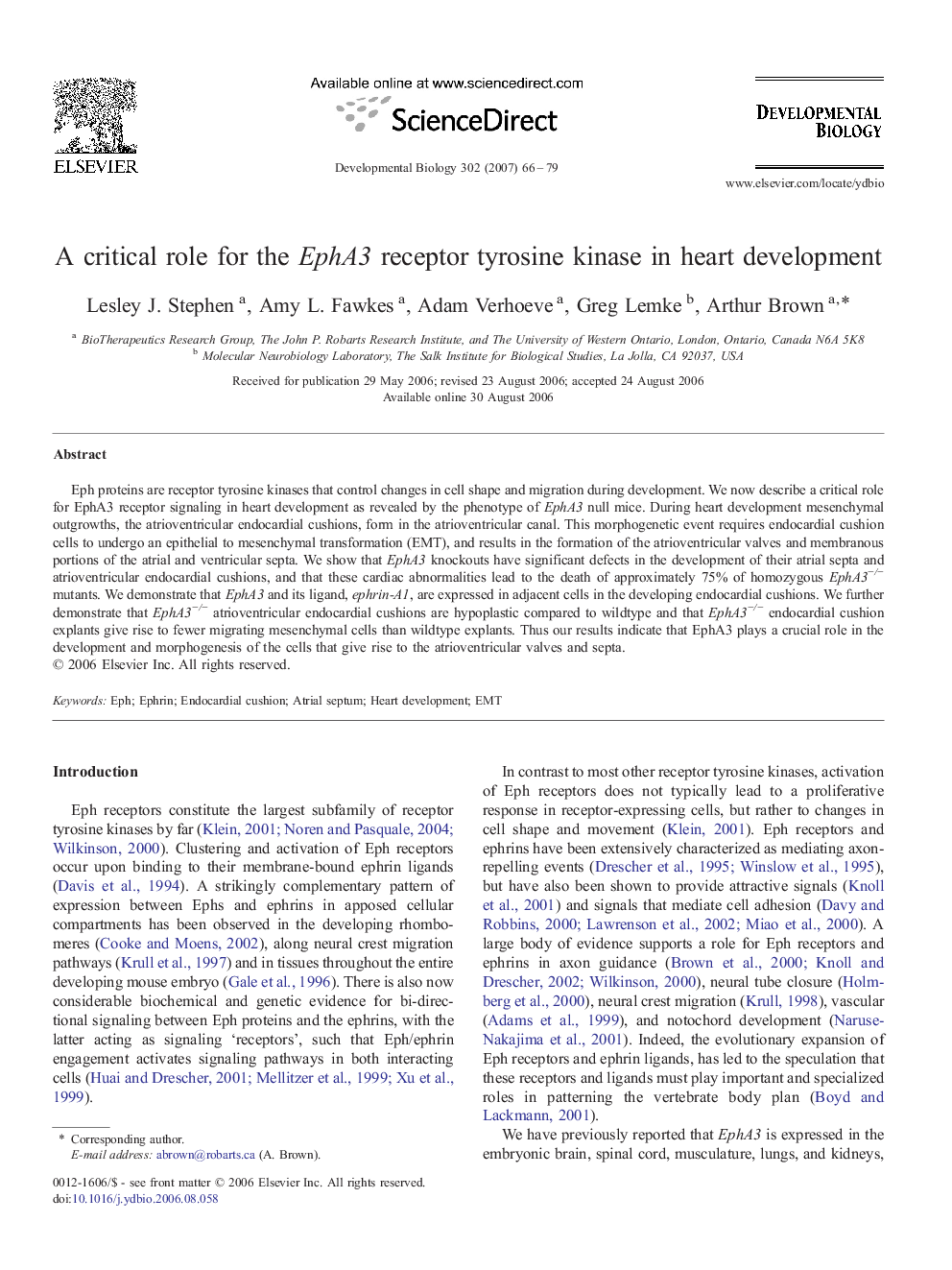| Article ID | Journal | Published Year | Pages | File Type |
|---|---|---|---|---|
| 10933760 | Developmental Biology | 2007 | 14 Pages |
Abstract
Eph proteins are receptor tyrosine kinases that control changes in cell shape and migration during development. We now describe a critical role for EphA3 receptor signaling in heart development as revealed by the phenotype of EphA3 null mice. During heart development mesenchymal outgrowths, the atrioventricular endocardial cushions, form in the atrioventricular canal. This morphogenetic event requires endocardial cushion cells to undergo an epithelial to mesenchymal transformation (EMT), and results in the formation of the atrioventricular valves and membranous portions of the atrial and ventricular septa. We show that EphA3 knockouts have significant defects in the development of their atrial septa and atrioventricular endocardial cushions, and that these cardiac abnormalities lead to the death of approximately 75% of homozygous EphA3â/â mutants. We demonstrate that EphA3 and its ligand, ephrin-A1, are expressed in adjacent cells in the developing endocardial cushions. We further demonstrate that EphA3â/â atrioventricular endocardial cushions are hypoplastic compared to wildtype and that EphA3â/â endocardial cushion explants give rise to fewer migrating mesenchymal cells than wildtype explants. Thus our results indicate that EphA3 plays a crucial role in the development and morphogenesis of the cells that give rise to the atrioventricular valves and septa.
Related Topics
Life Sciences
Biochemistry, Genetics and Molecular Biology
Cell Biology
Authors
Lesley J. Stephen, Amy L. Fawkes, Adam Verhoeve, Greg Lemke, Arthur Brown,
